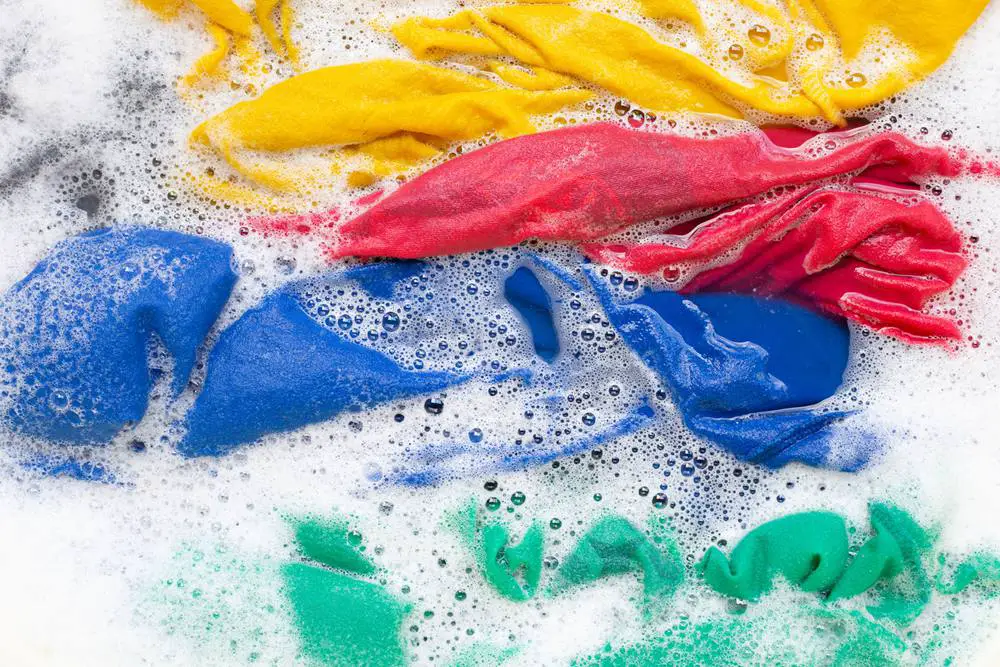
There’s a good reason why many people consider bleach to be the go-to choice when it comes to cleaning white clothes. Keep the color bright and looking its best? No problem! Get rid of stubborn food stains or that annoying perspiration scent? Easy!
However, a lot of people are hesitant to use bleach because they’re afraid it will ruin their colored clothes. But if used correctly, bleach can be a great way to remove stains and make your clothes look new again. In this blog post, we’ll teach you the right way to use bleach on colored clothing so that you can avoid any disasters!
Table of Contents
Can You Wash Colored Clothes With Bleach?

Whether a clothing item is safe to bleach depends on the type and quality of dye used. Many colored fabrics, such as those featuring 100% cotton and vibrant synthetic dyes, can be safely washed with bleach – if you follow the instructions.
However, garments in delicate fabrics – especially those utilizing natural dyes – should always be washed separately according to their instructions. In either case, testing different spots on your fabric before submerging it completely is a good way to make sure there will not be any unexpected color shifts or discoloration after washing.
When using bleach in the laundry, several common issues can arise:
- Bleach stains are one of the most common problems associated with using this powerful cleaning agent.
- Bleach can also cause the fabric to yellow over time as it slowly breaks down the fibers.
- It is not uncommon for bleach performance to be ineffective when dealing with tough stains or odors.
- Colored fabrics may also face fading or discoloration if exposed to bleach for a long time.
The Types of Bleach and Which One to Use
Bleaches come in many different forms, but typically they fall into main categories:
Chlorine bleach – Chlorine bleach is the most common type of bleach, and it’s the go-to choice for whitening and disinfecting clothes. However, chlorine bleach should only be used on all-white materials because heavier concentrations can cause damage to colored items, as well as to fabrics made from specialized fibers such as polyester or spandex.
Oxygen bleach – Oxygen bleach is an incredibly versatile and powerful laundry detergent, providing a safe and effective way to brighten and lift stains from colored fabrics. However, when it comes to disinfecting your clothes, oxygen bleach falls short.
Hydrogen peroxide – Hydrogen Peroxide is a multi-tasking marvel on the laundry list. Not only does it effectively whiten and brighten fabrics, but it’s also a great disinfectant for eliminating bacteria and odors.
So, what type of bleach should you use on colored clothing? Whenever possible, you should always opt for a non-chlorine bleach like oxygen bleach or hydrogen peroxide. These types of bleaches are gentler on clothes and can even help keep colors from fading over time.
How to Use Bleach on Colored Clothing Safely: 8 Steps to Follow
Bleach is a powerful cleaning agent – it’s no wonder so many of us reach for it to get rid of stubborn stains and discolorations. However, when it comes to colored clothes, some caution needs to be taken. If you want to safely wash your colored clothing with bleach, follow these steps!
Things you’ll need:
- Non-chlorine bleach
- Hot water
- Laundry detergent
- Washing machine
1. Read Labels to Prevent Damaging Your Clothes
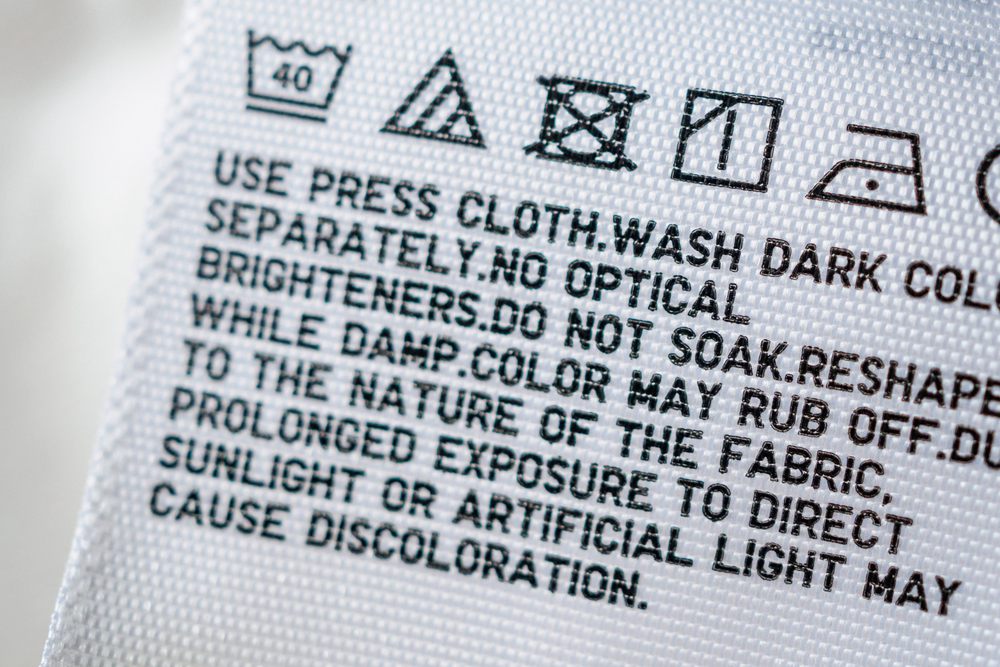
Not only can bleach ruin fabric by causing discoloration or fading, but it can also leave behind residues that will break down fibers or make the material uncomfortable. As such, it is important to always read labels before washing any item of clothing in bleach. Many labels will state whether the material is safe to use with such chemicals.
If the triangle symbol on the label has three lines through it, this indicates that only non-chlorine bleach should be used; almost all colored clothes will also recommend non-chlorine. However, do be careful: some fabrics cannot be bleached in any form – including acetates, silk, spandex, and wool.
Additionally, even if an item is marked as “bleach-safe”, there are still some precautions to take: reduce exposure time, and dilute the bleach if necessary. A small amount of research goes a long way in ensuring that your clothes come out of the wash looking good as new.
| Bleaching symbols | Chlorine bleach | Oxygen bleach |
 |
can be used | can be used |
 |
can be used | can not be used |
 |
can not be used | can not be used |
2. Spot Test the Fabric
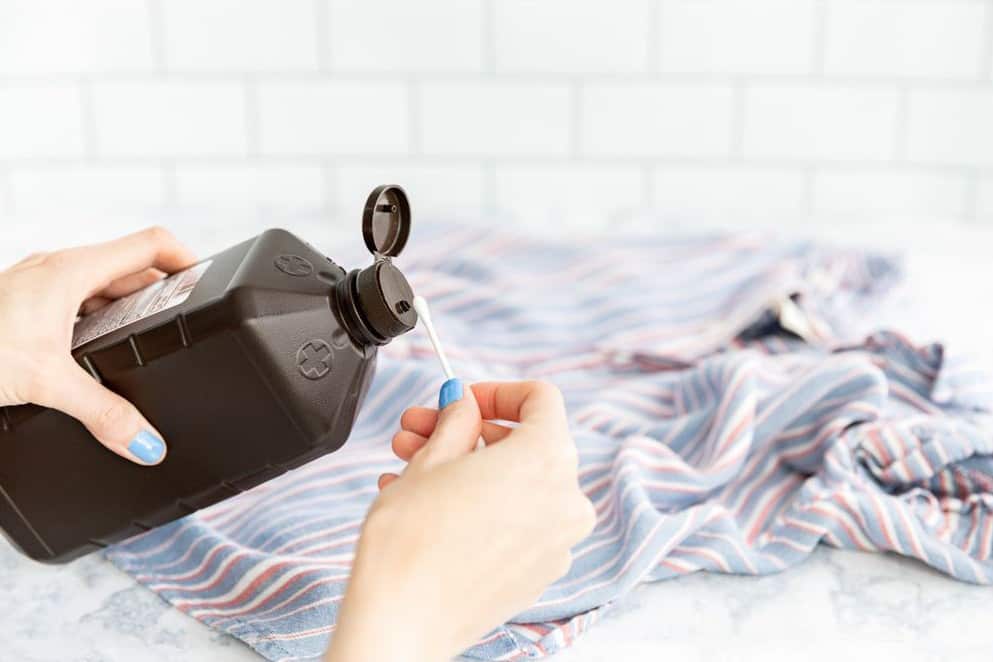
Before using bleach to remove stains on colored fabrics, it should always be done with caution. Don’t just assume that the fabric will be able to handle the potent chemicals. To be safe, follow one master rule: Spot Test!
This simply involves leaving a drop of bleach on a hidden area of the material and waiting for 5 minutes before deciding whether or not to proceed. If after 5 minutes there is no discoloration or damage done to the fabric then you can safely assume that it’s okay to use bleach.
However, if after 5 minutes you notice any kind of fading in color or other damage then give up on using bleach – there are plenty of other effective stain removers out there without risking irreparable damage.
3. Separate Dark and Light Clothes
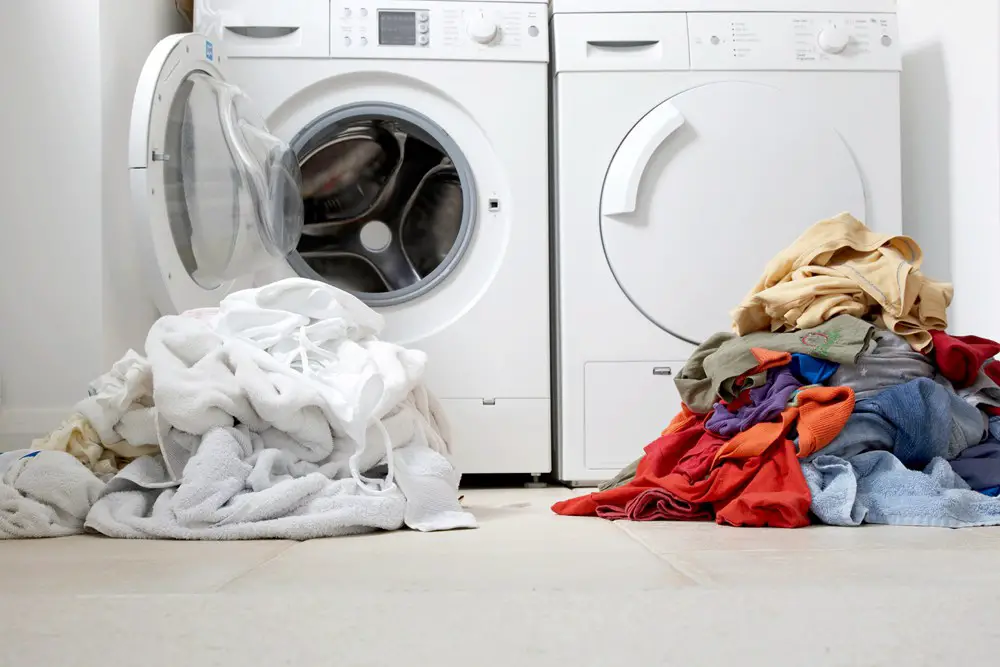
If you are washing items with bleach, it’s important to be mindful of color-mixing. Darker clothes should be kept away from lighter fabrics, otherwise, they could take on discolored shades due to the bleach.
Darker fabrics absorb the bleaching chemicals faster than their lighter counterparts, and the difference can be sizable. Lighter fabrics may remain undamaged while nearby items could be permanently altered.
4. Pretreat Stains With Diluted Bleach
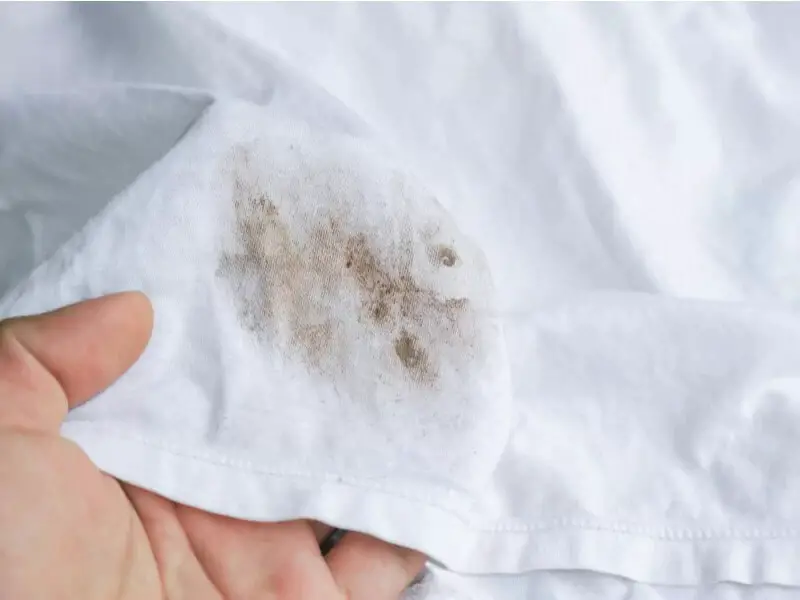
Before putting your clothes in a washing machine, pretreating stains with diluted bleach can help remove stubborn marks. This works best for sweat marks. Dissolve a single capful of non-chlorine bleach into a bucket or bowl of hot water for an effective cleaning solution.
However, if you use too much bleach in the pretreatment process, your clothes may become stiff and uncomfortable to wear due to overbleaching. To avoid such a situation, be sure to periodically scrub your clothes with a laundry brush while they are still in the soak – that should help get rid of any stiffness caused by bleaching and once again makes your clothes soft and comfortable.
5. Use Correct Settings on Your Washing Machine
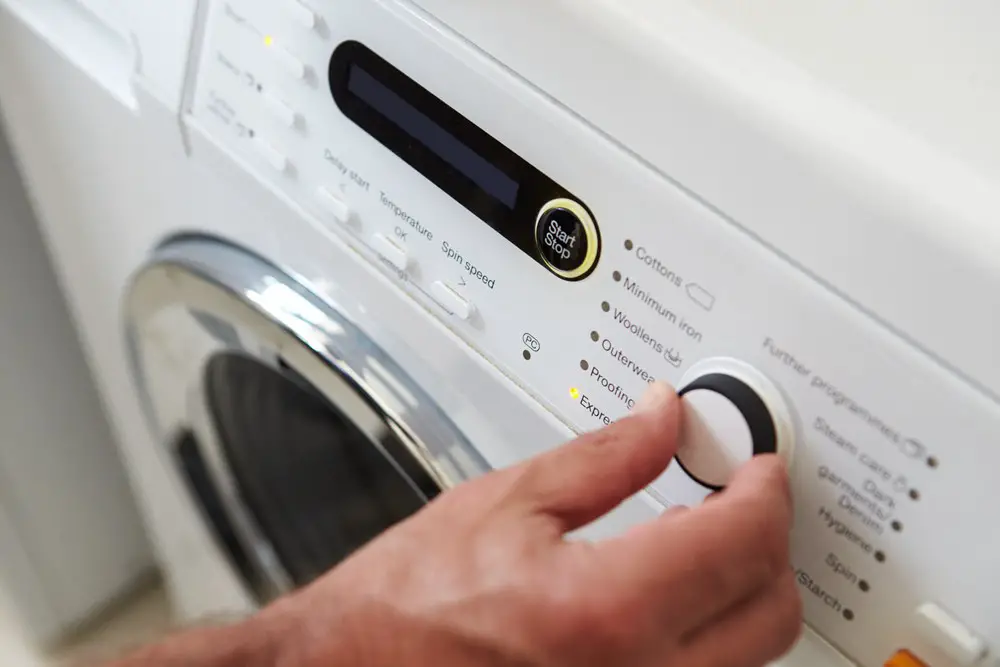
Be sure to follow the instructions on the tag for washing your garment. Not only does this make sure you don’t accidentally damage your clothes, but you must understand which machine setting to use.
If your clothes can be washed in hot water, set the temperature on your machine as hot as possible, preferably around 130°F (54°C). Doing this will help ensure that the bleach can reach its full potential and clean your clothes thoroughly without damaging them.
If it says to wash only in cold water, then don’t turn up the temperature! By using the correct settings on your washing machine, you can ensure that your stained clothes come out looking cleaner and brighter than ever before.
6. Add Bleach Properly
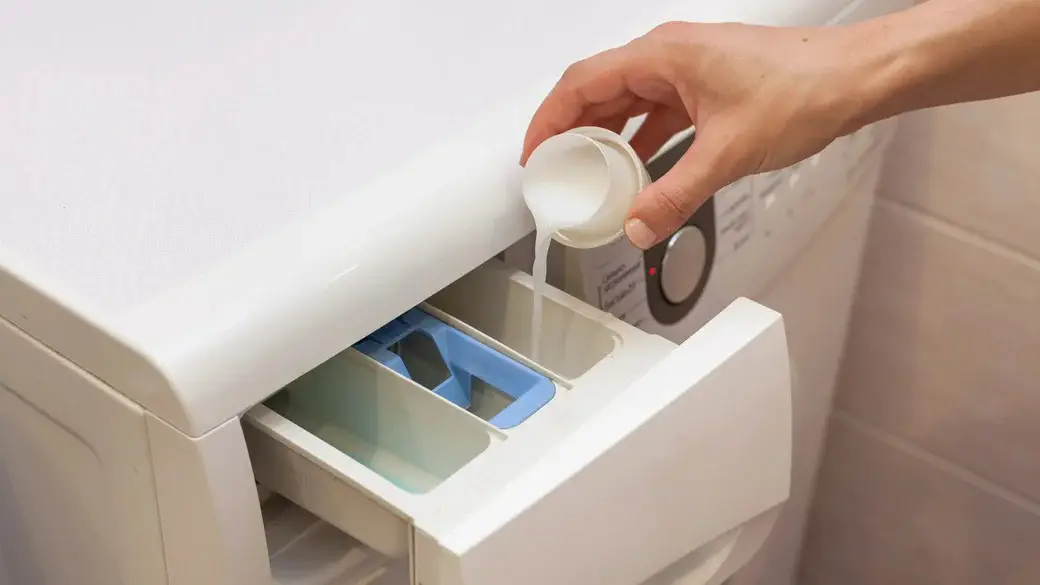
Bleaching clothing sounds like a no-brainer, but many people don’t realize just how easily bleach damage can occur. For instance, you should never just pour bleach directly onto fabrics – it’s guaranteed to cause stains and discoloration that you won’t want to be wearing!
In general, you’ll only need around 3/4 cup (180 milliliters) of non-chlorine bleach for a full load – anything more than that could be overkill! If you’re only washing a few items at a time, just use less accordingly.
Most washing machines also feature an automatic bleach dispenser that releases the perfect amount at the right time for optimal cleaning results – it’s like having a pro in the laundry room with you.
If you don’t have the convenience of a separate bleach dispenser on your washing machine, then you must remember a few rules: turn the water on first, and let it run for a few moments before adding your bleach. You should also give the bleach at least five minutes to dilute in the water before adding your garments.
7. Add Laundry Detergent
It seems straightforward enough: add the bleach, then add the detergent and start the cycle. Detergent is essential for removing dirt and soil from items; without it, stains are more likely to linger. Most non-chlorine bleaches are designed to be paired with special types of laundry detergents that help activate and enhance the bleaching action.
Even when using a safe non-chlorine bleach option, you still want to ensure clothes haven’t been exposed too long as this could damage fabric fibers – that’s where regular detergent comes in handy by helping break up residual grime and speed up the overall wash cycle time.
In other words, adding your detergent after adding your preferred bleach, is a no-brainer!
8. Run an Extra Rinse Cycle (Optional)
Bleach is an excellent stain-fighting tool but it can sometimes leave clothes with a noticeable and unpleasant smell. If you’re someone who likes to use bleach on your colored clothes, there’s one more step you should take to get rid of the bleach odor: the extra rinse cycle.
Without running at least one additional rinse cycle, chlorine fumes may still be lurking in your fabrics which only worsens the unwanted odor. The good news is that an extra rinse is all it takes! Not only does it get rid of the smell, but it also helps prevent discoloration or deterioration of clothing fibers.
5 Additional Tips for Using Bleach on Colored Clothing
The key to successful bleaching lies in following the right tips:
- Whenever you use household bleach on colored clothing, always dilute it with water first. Never add bleach directly to your clothes.
- Letting your clothes air dry away from direct sunlight also helps to protect against fading.
- Never bleach wool or silk garments as they are particularly prone to damage from chlorine bleach and other bleaching agents.
- Ensure that you never overload the washer when bleaching clothing items as this could cause uneven whitening since the fabric needs room for the bleach particles to circulate properly.
- Pay attention to how your clothes react to the process; if damage such as puckering or graying occurs then you should stop immediately and consult a professional cleaner!
By following these five tips for using bleach on colored clothing, you’ll be able to keep your wardrobe bright and stylish for many wears to come!
Conclusion
The eight steps outlined above for safely using bleach will help you manage stains more effectively. Always read the label, test a non-visible area before full application, separate dark and light clothes, treat stains with diluted bleach if necessary, and use the correct settings on your washing machine when laundering.
Then, add the bleach properly, just a few drops if opting for pre-soaking or dosing into your washer during its wash cycle. Add laundry detergent as usual and consider running an additional rinse cycle as needed before hanging clothes on the line to dry. Happy laundering!
FAQ
What clothes cannot be bleached?
It’s recommended refraining from using bleach on wool and silk (i.e., some of the most luxurious materials out there!) as both can be permanently damaged when exposed to chlorine. Leather is another sensitive material that should never be bleached; harsh chemicals can strip away the oils that keep leather soft and supple, resulting in brittleness.
What is a safer alternative to bleach?
Sadly, at times bleach can be more trouble than it’s worth. Fortunately, there are several safer alternatives to using bleach. White vinegar is a natural disinfectant, and baking soda can be used in combination with lemon juice or hydrogen peroxide as an effective, yet gentle cleaner. Hydrogen peroxide is also great on its own to remove stains and clean surfaces.
What are some safety precautions I should take when using bleach?
There are some easy steps to follow that will ensure you use bleach safely and responsibly. Always wear thick rubber gloves when handling bleach, as the concentrated liquid can irritate your skin. Additionally, always make sure you dilute the bleach before adding it to any fabrics. Never mix bleaches of different brands with each other or any other chemical agents as this could produce lethal fumes that can cause severe health problems.
^Inregistrare
Sunday 2nd of July 2023
Thank you for your sharing. I am worried that I lack creative ideas. It is your article that makes me full of hope. Thank you. But, I have a question, can you help me? https://accounts.binance.com/ro/register-person?ref=GJY4VW8W
gateio
Saturday 27th of May 2023
The point of view of your article has taught me a lot, and I already know how to improve the paper on gate.oi, thank you. https://www.gate.io/tr/signup/XwNAU
open a binance account
Wednesday 10th of May 2023
I don't think the title of your article matches the content lol. Just kidding, mainly because I had some doubts after reading the article. https://accounts.binance.com/en/register-person?ref=PORL8W0Z
binance
Wednesday 19th of April 2023
Thank you for your sharing. I am worried that I lack creative ideas. It is your article that makes me full of hope. Thank you. But, I have a question, can you help me?